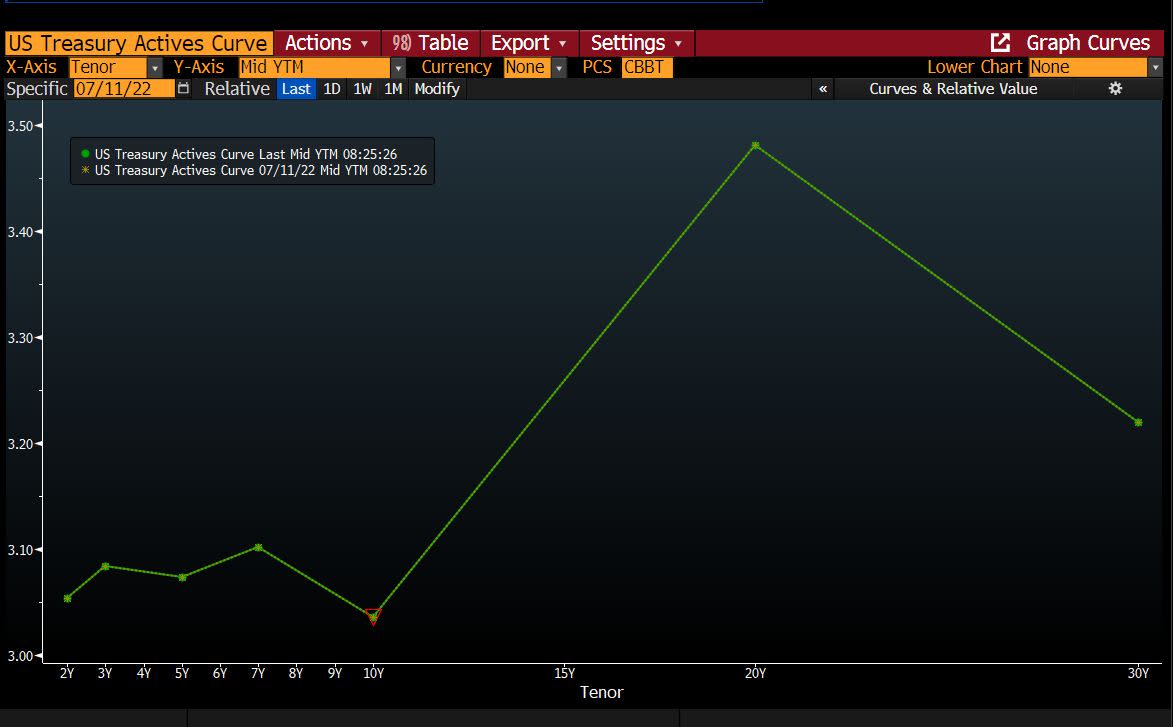
(Bloomberg) — Mark Cabana knows he sounds like a broken record by now.
Yet the head of US interest-rates strategy at Bank of America Corp. makes no apologies for repeatedly calling on Janet Yellen’s Treasury Department this year to enact big reforms to the $23 trillion Treasury market as liquidity drops toward pandemic-era levels.
Cabana’s latest gripe: The 20-year Treasury bond issue, relaunched in 2020 after a near 35-year hiatus, is finding limited demand on Wall Street — possibly costing the taxpayer and another sign that all is not well in the world’s biggest bond market.
“We are seeing more dislocations in the Treasury market, with major ones at the 20-year part of the curve,” said Cabana in phone interview.
The strategist has published reams of research detailing poor bond-trading conditions during the historic selloff caused by elevated inflation — views broadly shared by peers from Nomura Holdings Inc. to JPMorgan Chase & Co.
One big problem, according to Cabana, is that with money managers flocking to more liquid securities, the Treasury curve now has a conspicuous kink at the 20-year mark. That bond yields 3.42% as of 1:03 p.m. in New York, compared with just 2.98% on the 10-year and 3.16% on the 30-year.
The decision to reboot the 20-year bond has cost an additional $1.46 billion in annual interest versus a scenario where the issuance was equally divided between the 10- and 30-year maturities, according to a study conducted this month by Nomura.
Nevertheless, the Treasury’s view is that the move has paid off, by helping the government to expand its borrowing capacity.
“The 20-year has provided Treasury with significant, additional long-term borrowing capacity and helped Treasury meet the historical increase in borrowing needs as a result of the Federal Government’s response to Covid-19,” a Treasury spokesman said in an emailed comment. The spokesman noted that the reintroduction of the 20-year came after extensive market feedback.
US debt managers do recognize the importance of liquidity to fund the government at the lowest cost over time, a Treasury official said. And Treasuries remain the deepest and most liquid debt market in the world by any meaningful measure, the official said.
It’s early on in the life cycle of the rebooted 20-year, and it typically takes time for new securities to attract deep pools of institutional capital that would reduce its premium to other notes.
It’s also an open question whether the higher yields on the 20-year versus the 30-year bond necessarily amount to a big pricing anomaly. There are particularities with regard to particularly long maturities, known as convexity, that can explain the phenomenon. For example, 40-year and 50-year UK bonds yield less than 30-year ones.
The Treasury in recent quarters has been trimming its sales of 20-year bonds — part of a broader cutback in longer-dated issuance thanks in part to record tax inflows and diminishing Covid-related spending. But it has singled out the 20-year, along with the seven-year, for bigger reductions than for other maturities.
Cabana and his Nomura counterparts argue that US debt managers ought to go further.
“They need to cut long-end supply more aggressively, particularly the 20-year point in order to stabilize it,” he said. A double win would be to issue more Treasury bills, which are enjoying voracious demand from investors looking to avoid interest-rate risk, and supply remains insufficient, he said.
The next quarterly refunding announcement will be Aug. 3, when the Treasury details its major note and bond sales for the coming three months.
©2022 Bloomberg L.P.